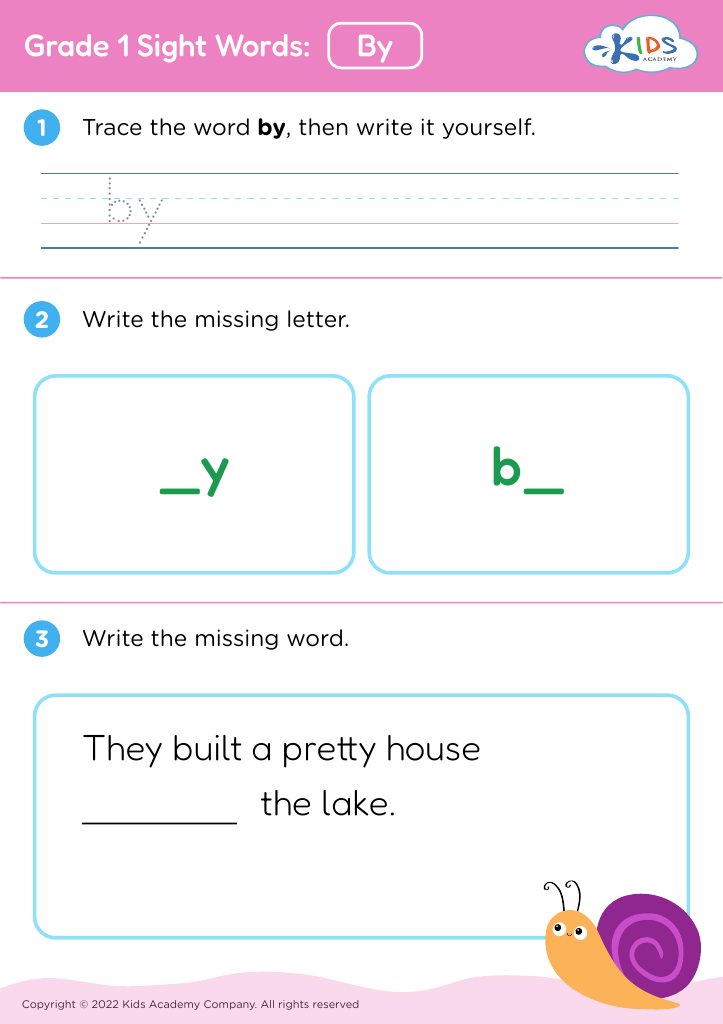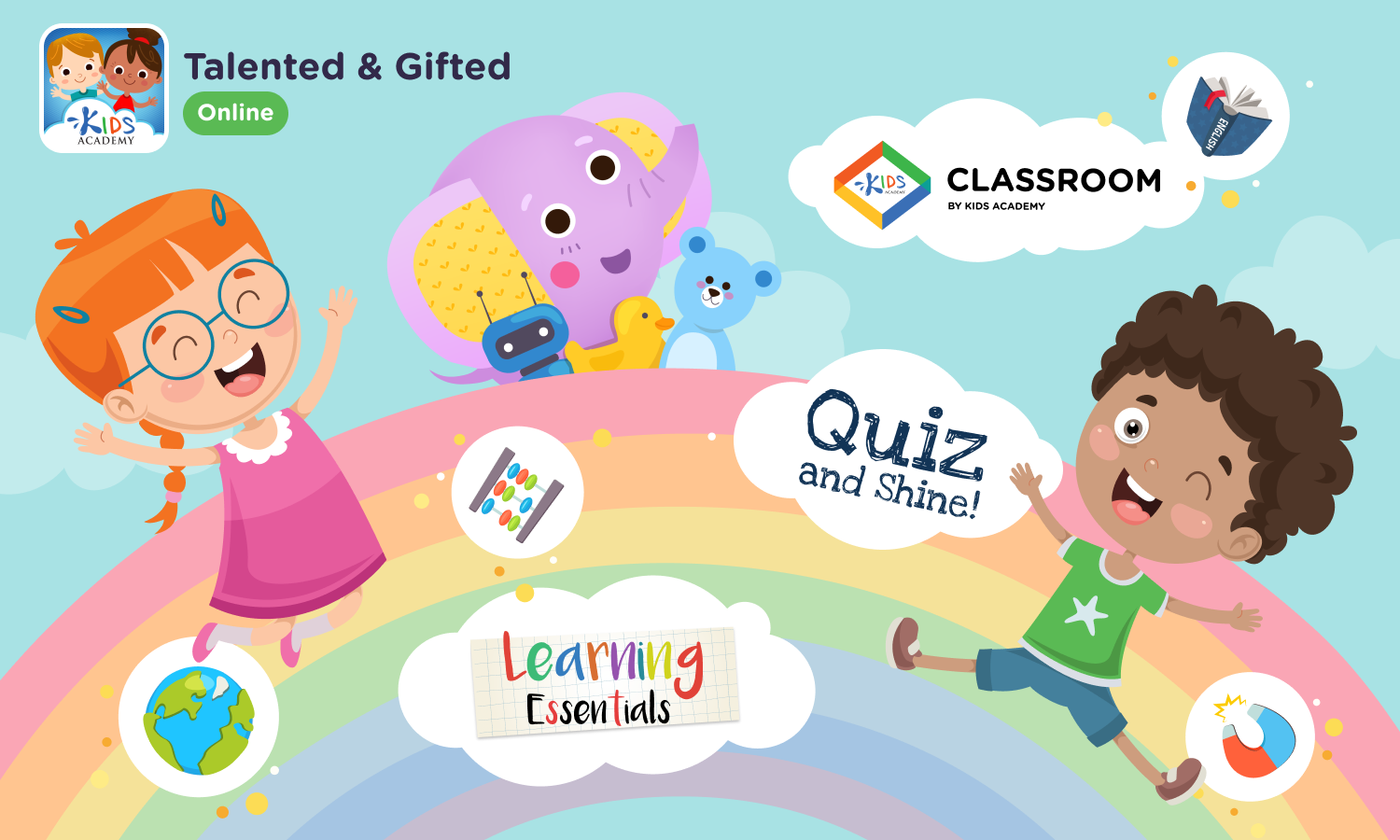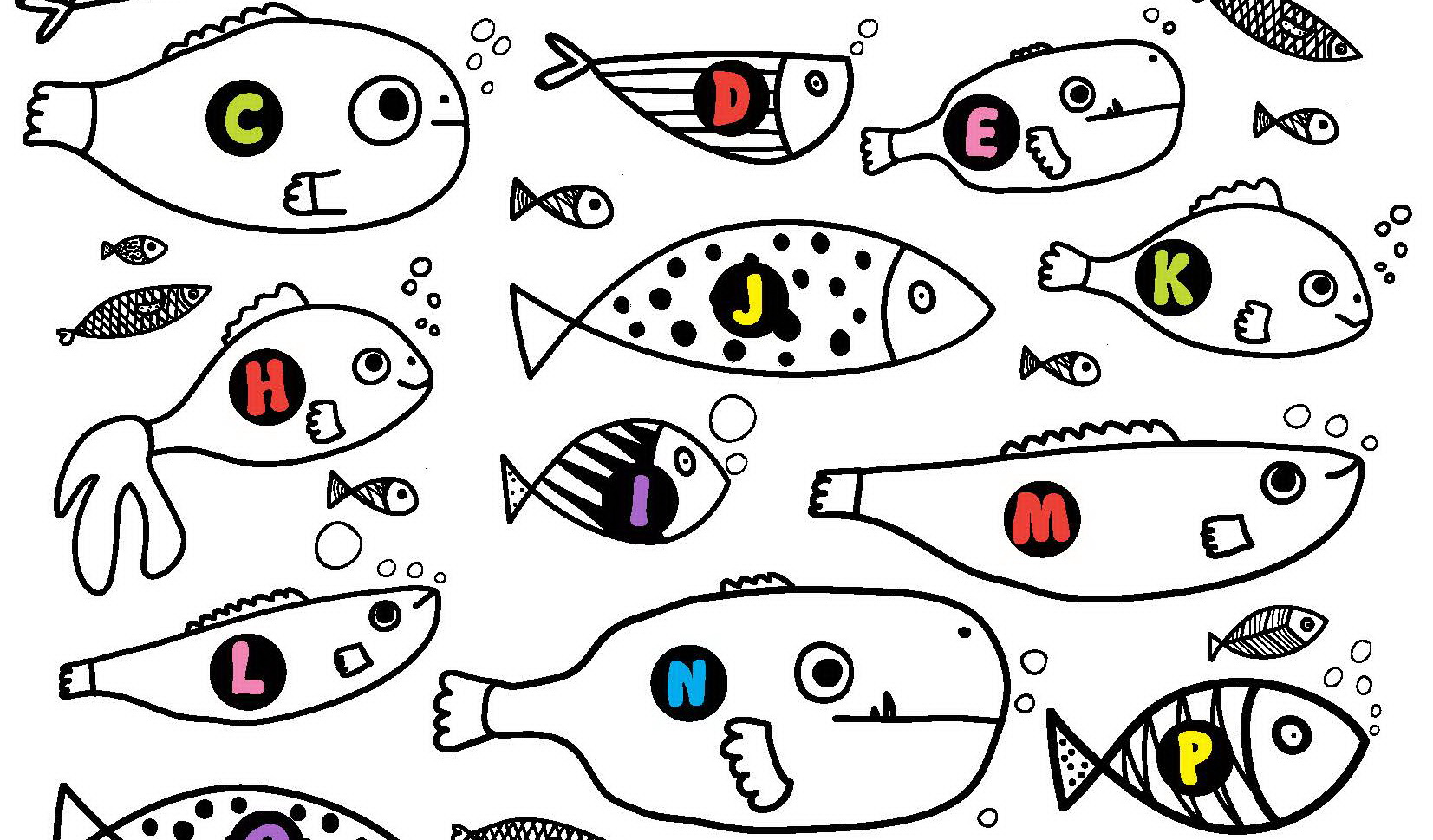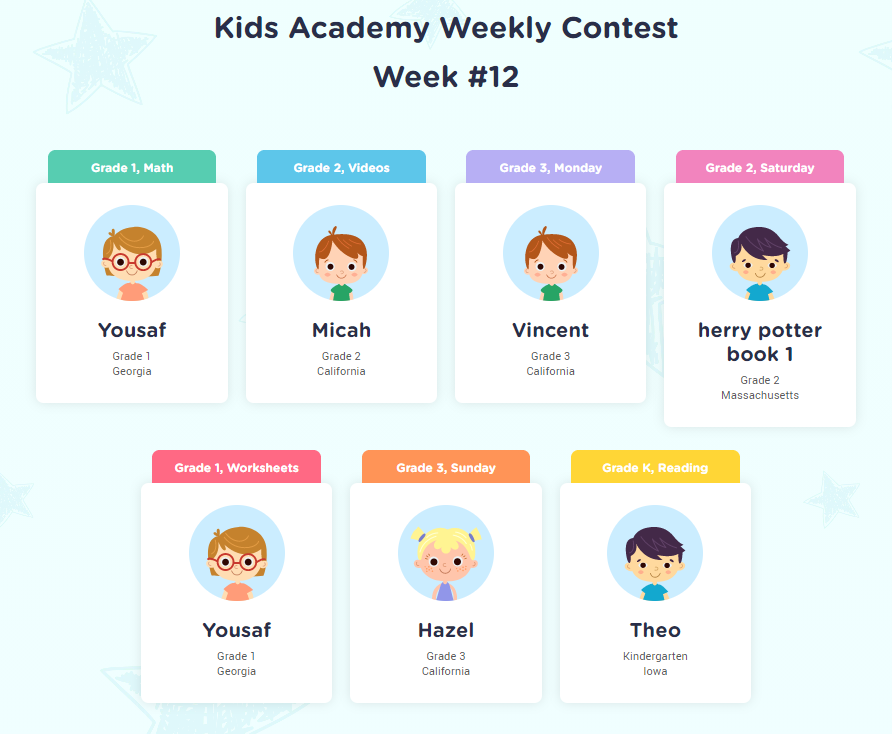Basic geometry comprehension Worksheets for Ages 7-9
3 filtered results
-
From - To
Unlock your child's potential with our engaging Basic Geometry Comprehension Worksheets designed specifically for ages 7-9. These worksheets offer a fun and interactive way for young learners to grasp foundational geometry concepts such as shapes, angles, lines, and spatial understanding. Each printable activity is crafted to enhance critical thinking skills while reinforcing essential math knowledge. Perfect for classroom use or at-home learning, our resources are aligned with educational standards to ensure your child builds confidence in geometry. Encourage your little one to explore the world of shapes and measurements and watch them flourish in their mathematical journey!
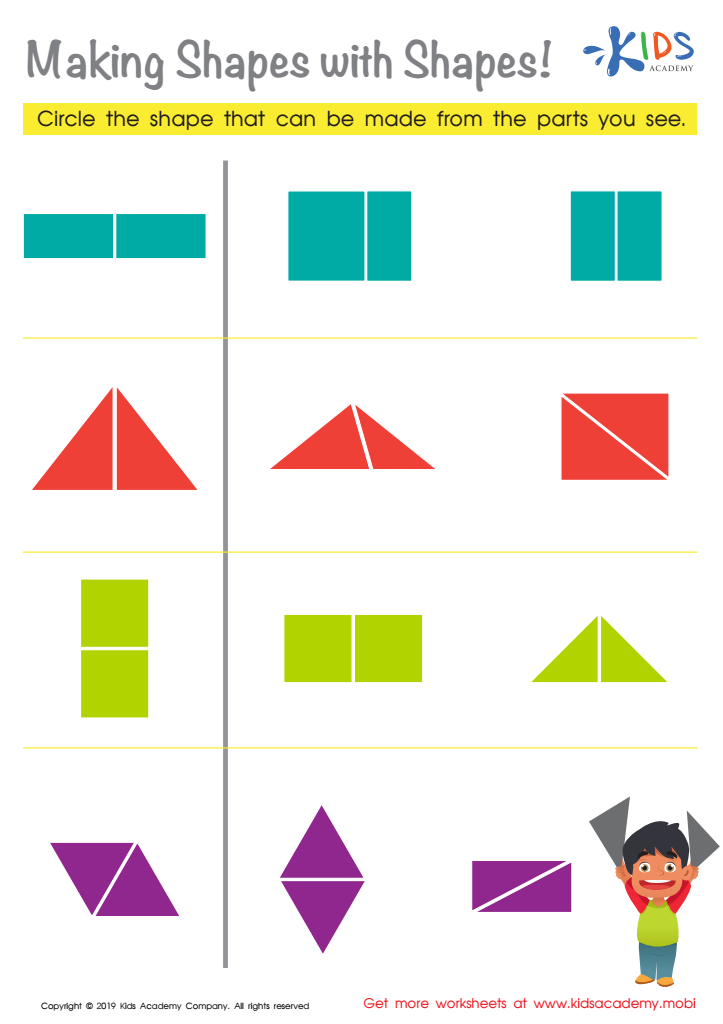

Making Shapes with Shapes Worksheet
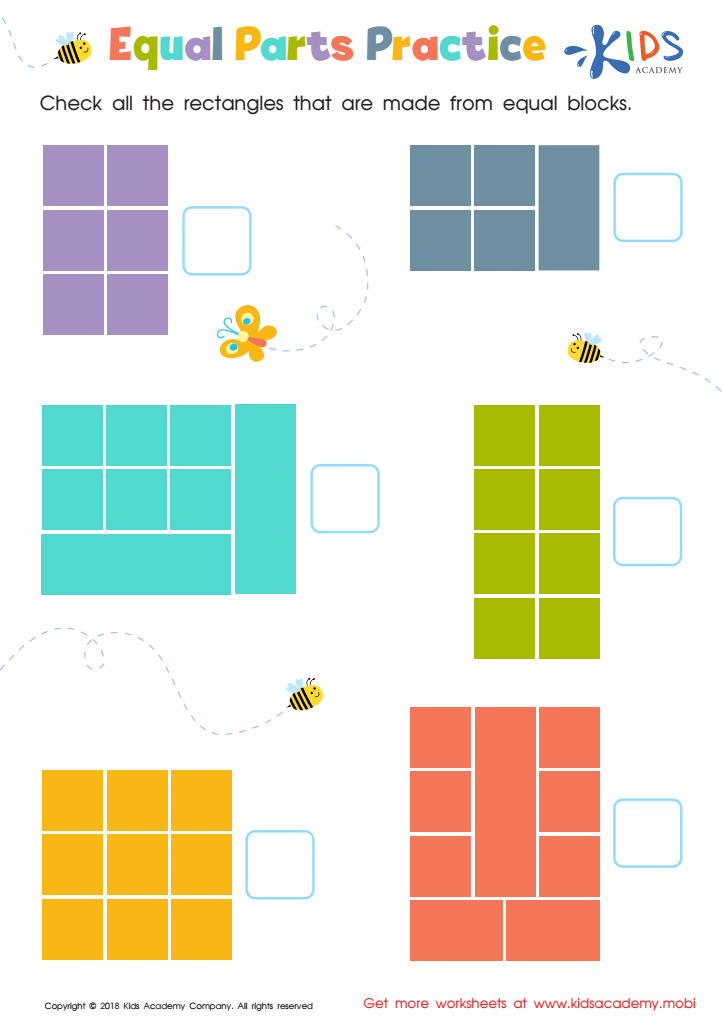

Equal Parts Practice Worksheet
Basic geometry comprehension is crucial for children ages 7-9 for several reasons. First, it lays the foundation for advanced mathematical concepts that they will encounter in later grades. Understanding shapes, sizes, and spatial relationships fosters critical thinking skills and problem-solving abilities, which are applicable across various subjects and real-life situations.
Moreover, geometry is not just about numbers; it deeply connects to visual learning. Children at this age are naturally curious and often learn best through hands-on experiences. Engaging in geometric activities helps them develop observation, perception, and reasoning skills. By recognizing patterns and relationships between shapes, they cultivate their cognitive abilities.
Parent and teacher involvement plays a vital role in this learning process. Encouraging activities like drawing, building, and measuring makes geometry relatable and enjoyable, sparking a lifelong interest in STEM fields. Moreover, geometry helps children understand the world around them, from everyday objects to architectural designs, promoting spatial awareness.
Ultimately, promoting basic geometry comprehension not only secures academic success but also equips children with essential life skills like logical reasoning, critical thinking, and creativity. Investing time in geometry education is an investment in a child's future, ensuring they build a solid knowledge base while developing a well-rounded intellectual capacity.
 Assign to My Students
Assign to My Students

